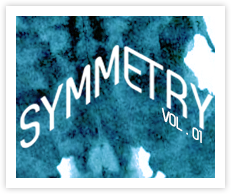

How to Befriend a Journalist 101
Alicia Fraser // February 17, 2012

Undeniably, there is a relationship between public relations and journalism. The bond between public relations and journalism is no different than most relationships in life: it’s complicated, requires constant care, and can be downright messy at times.
Public relations, when practiced authentically, is an ethical pursuit. This means public relations is centered around the idea of transparency. Public relations also pursues the ‘new’–nobody wants to read yesterday’s news. Thus, public relations practitioners are constantly trying to find the most newsworthy and the most transparent way to tell their stories to a public. However, even the best practitioners can’t do it all. We try, but the fact is, we need another medium for our stories to reach the public.
This is where the aforementioned relationship is born. Public relations practitioners provide journalists with ‘new’ stories and journalists tell these stories to the public. Public relations practitioners need the public to hear their stories and journalists need stories to tell. However, the connection between the two parties is completely dependent on how they interact. It becomes crucial for the public relations practitioner to initiate a transparent relationship that proves beneficial to both parties.
The unfortunate reality of this situation is that, quite often, public relations tends to have a negative public reputation. Many journalists also view public relations practitioners negatively. Frank Davies, an academic from the University of Lincoln, in his article ‘Public Relations and Journalism: Truth, Trust, Transparency and Integrity’ describes journalists as feeling more superior to those who practice public relations. Many journalists claim that public relations practitioners are guilty of being ‘spin doctors’ and are worthless to the public.
Public relations practitioners constantly face challenges when trying to create relationships with not just journalists, but their target audiences. Often, it is because of media that public relations practitioners have an audience at all. This is why it is incredibly important for those who choose public relations as a profession to build a strong relationship with journalists. There are many things that can be done to build and maintain this relationship. I mentioned earlier that this relationship would take constant care. Think of the following as a crash course in ‘Relationships with the Media 101’.
Lesson One: Know how to write a good press release. Practice makes perfect. Excellent writing is one of the best skills you can have as a public relations practitioner. In public relations, having a good reputation is crucial (for you and your organization), and press releases are often the first impression journalists have. Be concise and tailor your message to make it as newsworthy as possible.
Lesson Two: Stick to your word. Only make promises you know you can keep. It’ll make journalists see you as the reliable, credible, and trustworthy practitioner you are.
Lesson Three: Send your message to relevant parties. You’ve heard this a million times. If you know who to bring what type of story to, you’ll be much better off. There are journalists who focus on ‘soft’ stories or entertainment pieces, and there are journalists who focus on ‘hard’ stories that rely more heavily on the facts, some cover health stories, others cover politics–the list goes on. Put your networking skills to good use.
Lesson Four: Never leave a journalist hanging. Get back to them ASAP. If they do not think they can rely on you, they won’t come to you for information, and they won’t use information you send. If you find yourself in extreme circumstances where you are unable to get back to a journalist in a timely manner, call them as soon as you can and explain why. Though they’re incredibly busy people, they are human, and will more than likely understand.
Stay professional, honest, and transparent. Make sure your work is top quality, and retain your credibility by being as helpful to journalists as possible. It’s a simple formula, and if done well, can make things go smoothly. If public relations practitioners do their best to follow these simple rules, it could go far in helping those of us working in the field fight those nasty ‘spin doctor’ stereotypes.
-
Alison DeLory
